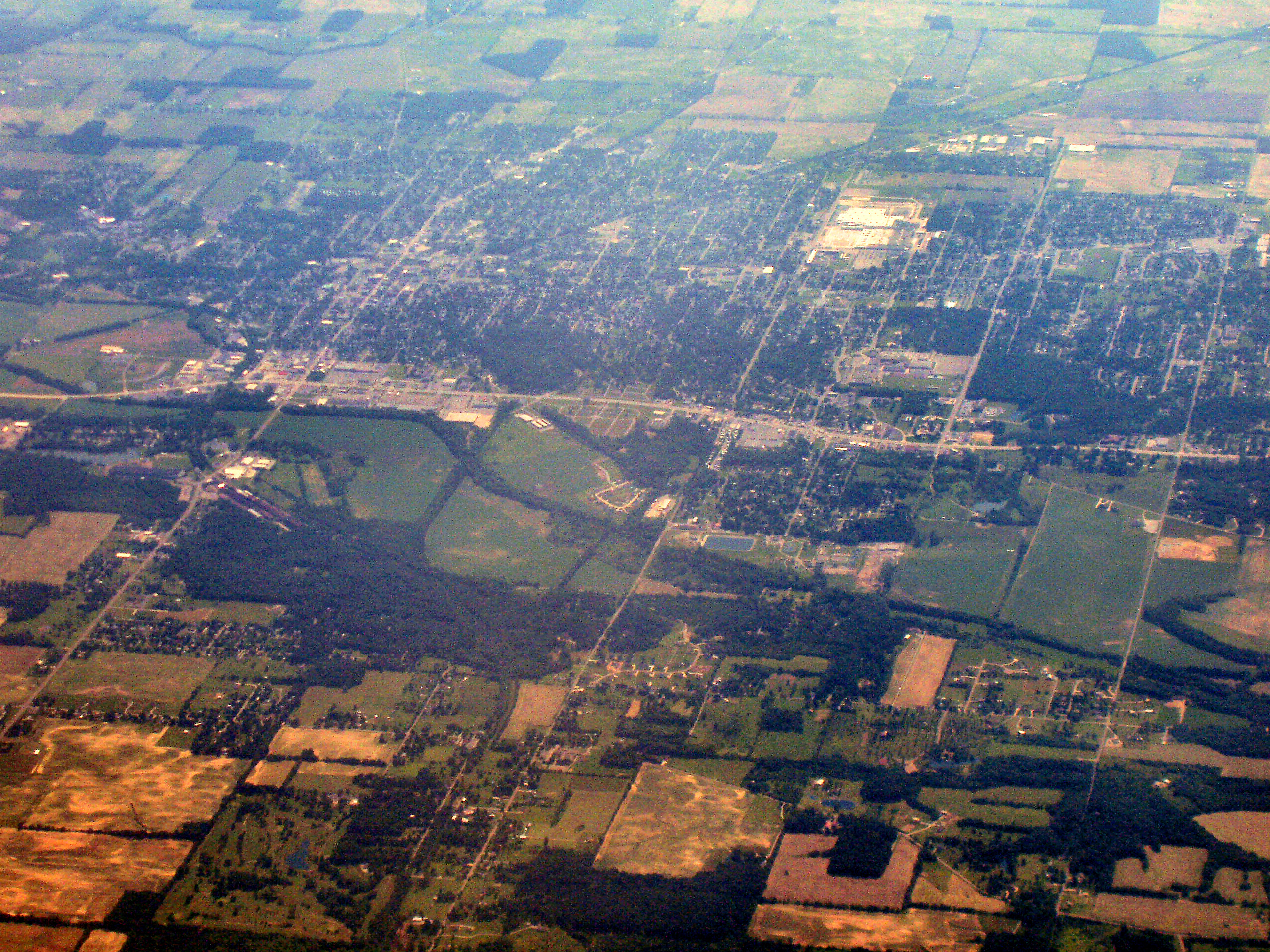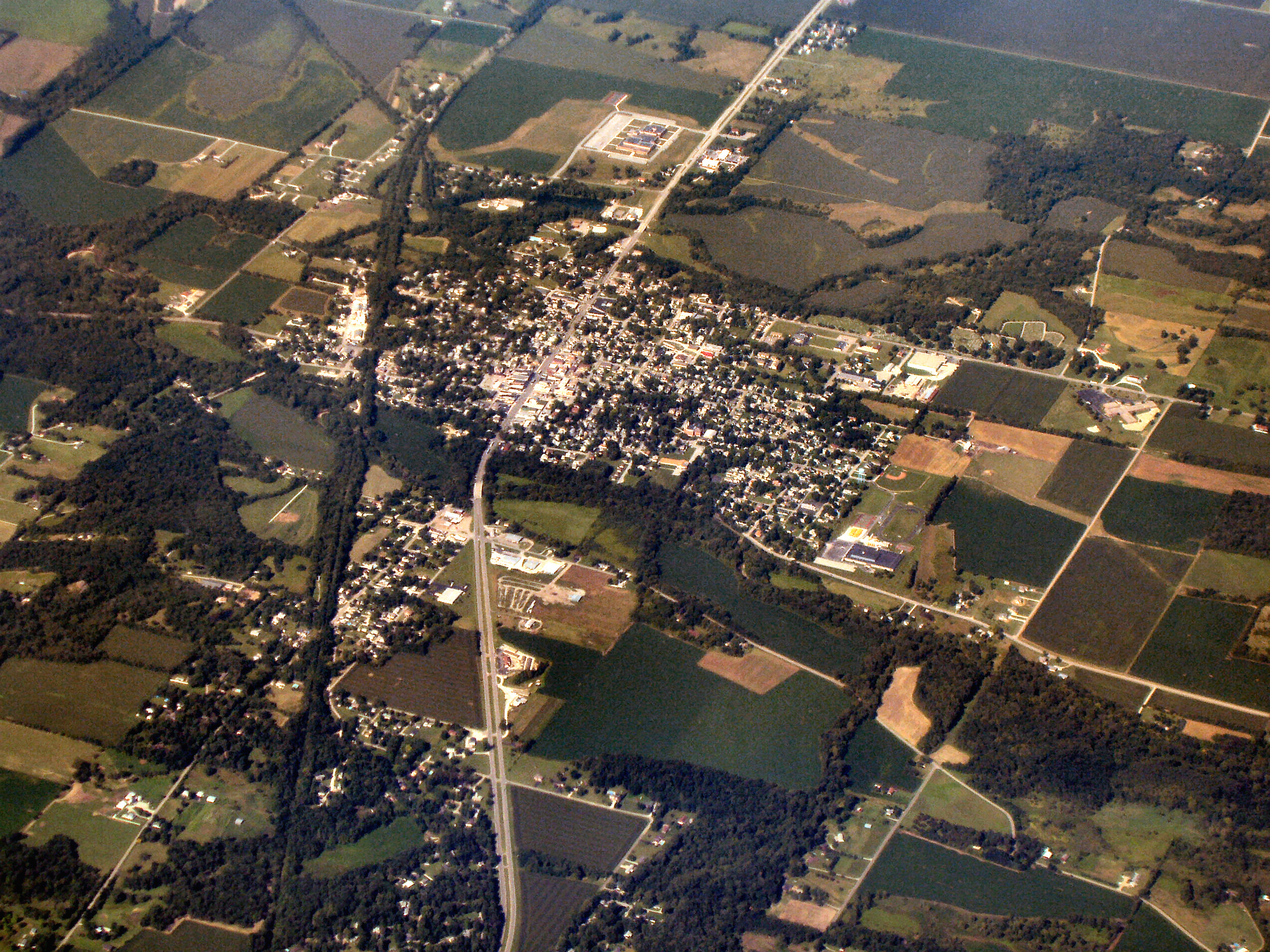|
Indiana State Road 140
State Road 140 (SR 140) is a State Road in the eastern section of the state of Indiana. Running for about in a general north–south direction, connecting rural portions of Rush and Henry counties. SR 140 was originally introduced in 1932 to connect Indiana Soldiers and Sailors Orphans Home to US 40 in Knightstown. The road was paved by the late 1930s. Route description SR 140 starts in rural Rush County, just south of Hoosier Youth Challenge Academy, as a continuation of Rushville Road (CR 340 W). The state road heads generally towards the northwest, passing through Hoosier Youth Challenge Academy, before crossing the Big Blue River. After the river the road becomes more north–south and enters Henry County and the town of Knightstown. In Knightstown SR 140 follows Jefferson Street, passing through residential properties. SR 140 ends in downtown Knightstown at an intersection between Jefferson Street and Main Street (US 40). Jefferson Street continues north as a city street ... [...More Info...] [...Related Items...] OR: [Wikipedia] [Google] [Baidu] |
Indiana Soldiers' And Sailors' Children's Home
The Indiana Soldiers' and Sailors' Children's Home (ISSCH) was a residential and educational facility near Knightstown, Indiana, in northwestern Rush County, Indiana. History The home was founded in 1865 by Governor of Indiana Oliver Morton and others and was for veterans of the American Civil War. Two years later, it came under the control of the State of Indiana and was known under a variety of names, including "Soldiers's Orphan's Home", "Indiana Soldier's and Seamen's Home", "Indiana Soldiers' Orphans' Home", and Soldiers' and Sailors' Orphans' Home". The name was then changed in the 1929 to "Indiana Soldiers' and Sailors' Children's Home", which is retained until its closing in 2009. During the 1890s, due to dwindling number of Civil War orphans, the Indiana law establishing the Home was amended to admit any student who had a close relative such as a parent, aunt, uncle, or grandparent who served in the military services of the United States. The "Home", as it was called by ... [...More Info...] [...Related Items...] OR: [Wikipedia] [Google] [Baidu] |
Henry County, Indiana
Henry County is a county located in east central Indiana, United States. As of 2020, the population was 48,914. The county seat and largest and only city is New Castle. Henry County is the main setting of the novel '' Raintree County'' by Ross Lockridge Jr. History Henry County was formed in 1822 from the Delaware New Purchase resulting from the Treaty of St. Mary's in 1818. It was named for Patriot Patrick Henry, governor of Virginia. Geography According to the 2010 census, the county has a total area of , of which (or 99.25%) is land and (or 0.75%) is water. Cities * New Castle Towns Unincorporated areas Townships Reservoirs * Castle Lake * Giboney Lake * Haven, Lake * Summit Lake Reservoir * Westwood Park Reservoir Adjacent counties * Delaware County (north) * Randolph County (northeast) * Wayne County (east) * Fayette County (southeast) * Rush County (south) * Hancock County (southwest) * Madison County (northwest) Major highways Sources: National ... [...More Info...] [...Related Items...] OR: [Wikipedia] [Google] [Baidu] |
Rush County, Indiana
Rush County is a county in the U.S. state of Indiana. In the 2010 United States Census, the population was 17,392. The county seat (and only city) is Rushville. History When the Indiana Territory was granted statehood (20 December 1816), there were no settlers on the lands of the future Rush County. However, this changed quickly, and by 1821 the newly founded settlements were desirous of being organized into a county unit. Accordingly, the state legislature passed an act dated 31 December 1821 which authorized Rush County, effective 1 April, and further authorized the first commissioners (pro tem) to begin organizing the county's governing structure on 3 June 1822. The act also authorized six townships to cover the county; subsequent growth through the years has caused the number of townships to double. It was named for Dr. Benjamin Rush, one of the signers of the 1776 Declaration of Independence. That same summer (1822) the future town (and county seat) of Rushville was platte ... [...More Info...] [...Related Items...] OR: [Wikipedia] [Google] [Baidu] |
Indiana
Indiana () is a U.S. state in the Midwestern United States. It is the 38th-largest by area and the 17th-most populous of the 50 States. Its capital and largest city is Indianapolis. Indiana was admitted to the United States as the 19th state on December 11, 1816. It is bordered by Lake Michigan to the northwest, Michigan to the north, Ohio to the east, the Ohio River and Kentucky to the south and southeast, and the Wabash River and Illinois to the west. Various indigenous peoples inhabited what would become Indiana for thousands of years, some of whom the U.S. government expelled between 1800 and 1836. Indiana received its name because the state was largely possessed by native tribes even after it was granted statehood. Since then, settlement patterns in Indiana have reflected regional cultural segmentation present in the Eastern United States; the state's northernmost tier was settled primarily by people from New England and New York, Central Indiana by migrants fro ... [...More Info...] [...Related Items...] OR: [Wikipedia] [Google] [Baidu] |
Knightstown, Indiana
Knightstown is a town in Wayne Township, Henry County, Indiana, adjacent to Rush County, along the Big Blue River. The population was 2,182 at the 2010 census. It is approximately thirty-two miles east of Indianapolis. Knightstown is famous for the 1986 film '' Hoosiers''. The Hoosier Gym was used in the filming of the film. Knightstown hosts two annual festivals: Jubilee Days held in early-mid June and The Hoosier Fall Festival held in September. Knightstown also hosts an annual car show and a music series on the town square. The Hoosier Gym also hosts Indiana's best high school basketball players in the annual Hoosier Classic. History Knightstown was founded and platted by Waitsell M. Cary in 1827. It was named for Jonathan Knight, an engineer on the National Road and U.S. Congressman from Pennsylvania. A post office has operated in Knightstown since 1833. The Elias Hinshaw House, Knightstown Academy, and Knightstown Historic District are listed on the National Regis ... [...More Info...] [...Related Items...] OR: [Wikipedia] [Google] [Baidu] |
Big Blue River (Indiana)
The Big Blue River is an U.S. Geological Survey. National Hydrography Dataset high-resolution flowline dataThe National Map, accessed May 19, 2011 tributary of the Driftwood River in east-central Indiana in the United States. Via the Driftwood, White, Wabash and Ohio rivers, it is part of the watershed of the Mississippi River. Course The Big Blue rises in northeastern Henry County and flows generally southwestwardly through Rush, Hancock, Shelby and Johnson counties, past the towns of New Castle, Knightstown, Carthage, Morristown, Shelbyville and Edinburgh. It joins Sugar Creek to form the Driftwood River west of Edinburgh. At Shelbyville, it collects the Little Blue River. At the USGS station at Shelbyville, Indiana, the Big Blue River has an approximate discharge of 513 cubic feet per second. See also *List of Indiana rivers * County Line Bridge (Morristown, Indiana) References Columbia Gazetteer of North America entry*DeLorme DeLorme is the producer of per ... [...More Info...] [...Related Items...] OR: [Wikipedia] [Google] [Baidu] |
AADT
Annual average daily traffic, abbreviated AADT, is a measure used primarily in transportation planning, transportation engineering and retail location selection. Traditionally, it is the total volume of vehicle traffic of a highway or road for a year divided by 365 days. AADT is a simple, but useful, measurement of how busy the road is. AADT is the standard measurement for vehicle traffic load on a section of road, and the basis for most decisions regarding transport planning, or to the environmental hazards of pollution related to road transport. Uses One of the most important uses of AADT is for determining funding for the maintenance and improvement of highways. In the United States the amount of federal funding a state will receive is related to the total traffic measured across its highway network. Each year on June 15, every state in the United States submits Highway Performance Monitoring System HPMS">Highway Performance Monitoring System">Highway Performance Monitoring Sy ... [...More Info...] [...Related Items...] OR: [Wikipedia] [Google] [Baidu] |
State Highways In Indiana
State may refer to: Arts, entertainment, and media Literature * ''State Magazine'', a monthly magazine published by the U.S. Department of State * ''The State'' (newspaper), a daily newspaper in Columbia, South Carolina, United States * ''Our State'', a monthly magazine published in North Carolina and formerly called ''The State'' * The State (Larry Niven), a fictional future government in three novels by Larry Niven Music Groups and labels * States Records, an American record label * The State (band), Australian band previously known as the Cutters Albums * ''State'' (album), a 2013 album by Todd Rundgren * ''States'' (album), a 2013 album by the Paper Kites * ''States'', a 1991 album by Klinik * ''The State'' (album), a 1999 album by Nickelback Television * ''The State'' (American TV series), 1993 * ''The State'' (British TV series), 2017 Other * The State (comedy troupe), an American comedy troupe Law and politics * State (polity), a centralized political organizatio ... [...More Info...] [...Related Items...] OR: [Wikipedia] [Google] [Baidu] |
Transportation In Henry County, Indiana
Transport (in British English), or transportation (in American English), is the intentional Motion, movement of humans, animals, and cargo, goods from one location to another. Mode of transport, Modes of transport include aviation, air, land transport, land (rail transport, rail and road transport, road), ship transport, water, cable transport, cable, pipeline transport, pipeline, and space transport, space. The field can be divided into infrastructure, vehicles, and business operations, operations. Transport enables human trade, which is essential for the development of civilizations. Transport infrastructure consists of both fixed installations, including roads, railways, airway (aviation), airways, waterways, canals, and pipeline transport, pipelines, and terminals such as airports, train station, railway stations, bus stations, warehouses, trucking terminals, refueling depots (including fueling docks and fuel stations), and seaports. Terminals may be used both for intercha ... [...More Info...] [...Related Items...] OR: [Wikipedia] [Google] [Baidu] |




